Silybum marianum, Blessed Milkthistle
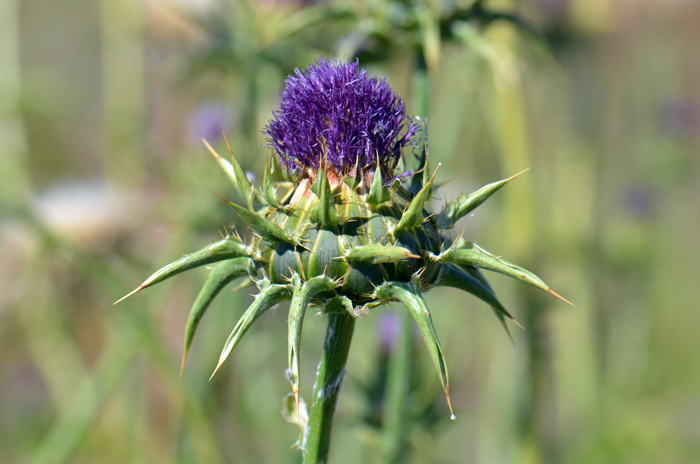
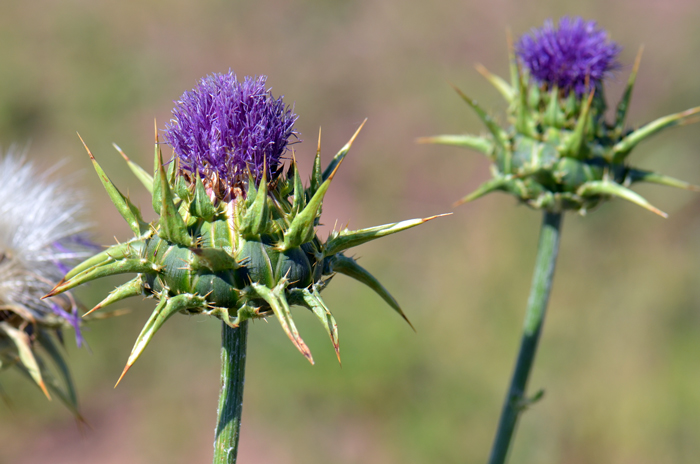
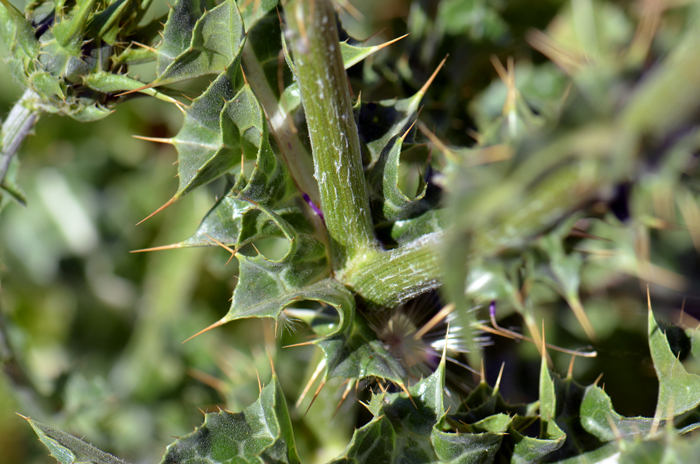
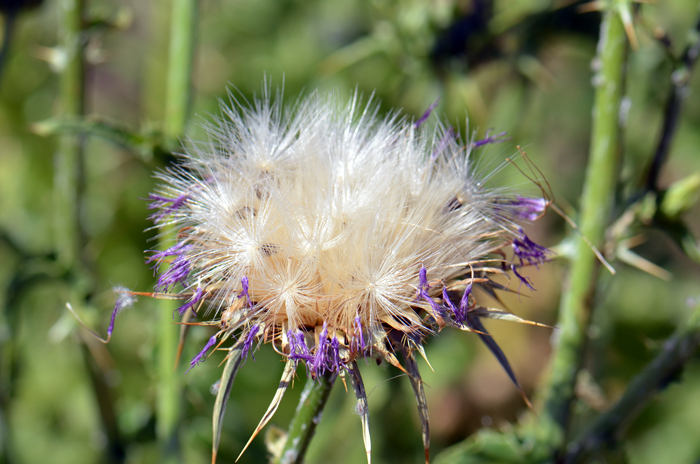
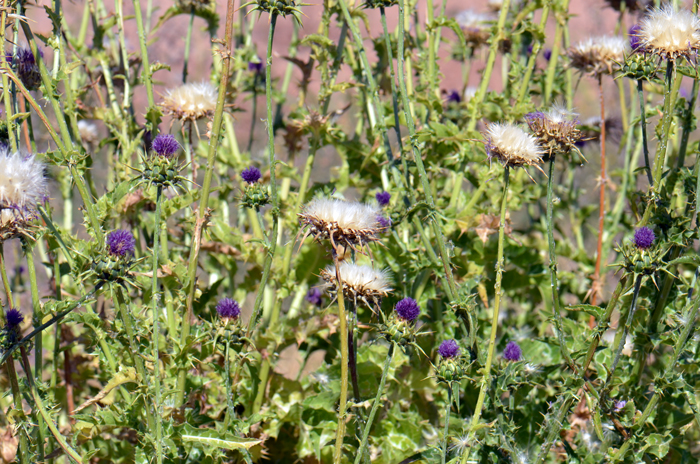
Scientific Name: Silybum marianum
Common Name: Blessed Milkthistle
Also Called: Blessed Milk-thistle, Cardus Marianus, Marian Thistle, Mary Thistle, Mediterranean Milk Thistle, Milk Thistle, Saint Mary's Thistle, Spotted Thistle and Variegated Thistle
Family: Asteraceae, Sunflower Family
Synonyms: (Carduus marianus, Mariana mariana)
Status: Introduced
Duration: Annual or biennial.
Size: 1 to 6 feet (.3-1.8 m) or more; 6.5 feet (2 m)
Growth Form: Forb/herb; starts out in a small rosette and quickly grows a large array of basal leaves up to 60 inches (152 cm); the plants are upright (erect); and the stems are hairless or slightly covered in dense, soft, often matted short hairs (tomentose), or thinly pilose, stems hollow out with age.
Leaves: Green; leaves have spiny edges, they are clasping, hairless, variegated, shiny green with milky-white venation; leaves are large, up to 2 feet (61 cm); oblong to lanceolate often pinnately lobed.
Flower Color: Purple; floral heads reddish-purple or purple; single (solitary) flower heads are large, between 2 and 4 inches (5-12 cm) across; flowers on a long leafless inflorescence; the bracts surrounding the floral heads (phyllaries) are hairless and spreading with long tapered spine tips as shown in the photos above; the fruit is a fuzzy wind-borne cypsela.
Flowering Season: February or March through August or September
Elevation: Sea level to 2,600 feet (800 m)
Habitat Preferences: Roadsides, meadows, open fields and waste areas.
Recorded Range: In the United States Blessed Milkthistle has a sporadic distribution scattered throughout the southern and a few northeastern states. It is also introduced and spread throughout most of Canada. In the southwest it is found in decent numbers in CA, AZ and with fewer populations in NM, NV and TX.
North America & US County Distribution Map for Silybum marianum.
North America species range map for Blessed Milkthistle, Silybum marianum:
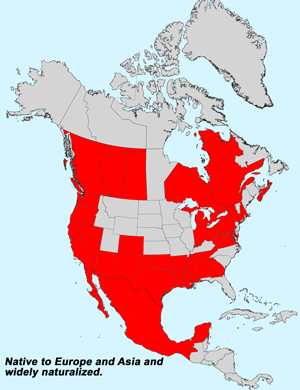
U.S. Weed Information: Silybum marianum is listed in:
Plants included here may become weedy or invasive.
Invasive/Noxious Weed Information: Silybum marianum is listed as a Noxious Weed by:
Plants included here are invasive or noxious.
Wetland Indicator: Unknown
Threatened/Endangered Information: Unknown
Genus Information: In North America there are 2 species and 2 accepted taxa overall for Silybum. Worldwide, The Plant List includes 2 accepted species names and a further 4 scientific names of infraspecific rank for Silybum.
The genus Silybum was published in 1763 by Michel Adanson, (1727-1806).
In the Southwestern United States: there is 1 species of Silybum. Data approximate and subject to revision.
Comments: Blessed Milkthistle is a handsome European species introduced in the United States and sometime cultivated. All parts of Blessed Milkthistle, Spotted Thistle or Variegated Thistle as they are also locally called, are toxic if ingested and may cause heavy losses of cattle and sheep. The leaves contain high levels of nitrates.
Blessed Milkthistle is also cultivated as an ornamental.
Photos taken May 31 roadside adjacent to agricultural area, Maricopa County, Arizona.
However the vegetative parts, including leaves and stems, are known to be toxic to cattle and sheep.
The genus Silybum was published in 1763 by Michel Adanson, (1727-1806).
The species epithet “marianum” (maria'num:) according to “California Plant Names: Latin and Greek Meanings and Derivations”, compiled by Michael L. Charters, the name marianum is “referring to the story that the white marks on the leaves resulted from drops of milk shed while Mary nursed the Christ child. The species Silybum marianum has been called Our Lady's or blessed thistle...”.

